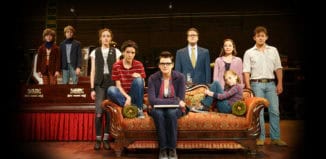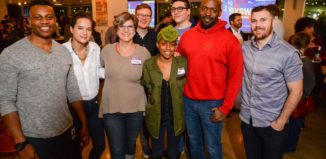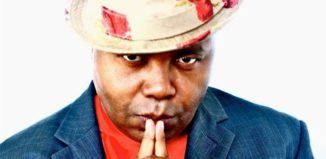L Style G Style has endeavored here to single out many of the high points of gay culture and activism in Austin during the last 40 years. To be sure, this timeline is not intended to be entirely comprehensive, but rather is a sampling of the events, people, places and memories shared by Central Texas’ GL community. Special thanks to those who helped with the compilation of this timeline.
1968: The bar that would become, at various times, The Apartment Lounge, The New Apartment and Dirty Sally’s opens at 29th and Rio Grande streets.
A public park on the shores of Lake Travis becomes a destination for free-loving straight and gay people in the 1960s, eventually developing the moniker “Hippie Hollow.”
1970: April: The University of Texas’ student newspaper, The Daily Texan, announces the first public meeting of gays and lesbians in Austin history.
Spring: The Common Struggle begins organizing at UT, forming the Gay Liberation Front, or GLF.
1971: March: More than 200 people attend what’s billed as Austin’s First Annual National Gay Conference, an event organized by UT’s Gay Liberation Front.
1974: January: Gay People of Austin (GPA) holds its first meeting. Founded by former GLF members, the group registers as a formal UT organization.
1975: January: The Texas Penal Code is revised to allow women to go topless. Desha Melton, an Austin lesbian, tests the law and is arrested. Others follow suit after she is released.
January: Austin Lesbian Organization (ALO) forms and more than 100 women attend the first meeting. The group, comprised mainly of UT students, holds dances and sporting events such as softball and soccer matches.
November: Members of the Austin Lesbian Organization and Gay Community Services picket the 1978 Austin-American Statesman for refusing to publish ads for gay organizations and for running housing and employment ads which specify “no gays.” The paper agrees the following month not to print ads that state “no gays.” The paper begins printing ads from gay and lesbian organizations the following April.
A group of GLBT Austinites form the Austin Independent Community Church and begin meeting in various homes. The church is officially chartered as Metropolitan Community Church of Austin Inc. three years later.
1977: April: The Austin City Council passes a Public Accommodations Ordinance that outlaws discrimination based on sexual orientation.
May: A bill proposed by Rep. Clay Smothers, D-Dallas, that would make it a criminal act to register gay groups at public universities in Texas sparks the formation of the University Lesbian/Gay Alliance at UT. The Legislature defeats the bill.
1978: Recognizing the need to have the community’s interests represented in the Texas Legislature’s 66th session, a group of gays and lesbians form the Human Rights Advocates, which later becomes Equality Texas.
1979: October: Dozens from Austin participate in the first gay march on Washington.
1982: January: Voters overwhelmingly reject a proposed amendment that would have made Austin the first city in the nation to legalize housing discrimination based on sexual orientation. The following month, the City Council amends the Fair Housing Ordinance to protect gays and lesbians from housing discrimination, making Austin the 17th city in the country to do so.
Chances Bar opended and was known as the “Coolest Lesbian Bar in Texas.”
1983: The first Austin AIDS patient is diagnosed.
In response to complaints that the Texas Alcoholic Beverage Commission is harassing gay bars around the state, Bettie Naylor and Bunch Brittain organize the Bar Owners’ Association of Texas to lobby the Legislature on behalf of the owners.
1985: Spring: During the annual Round-Up for student organizations at UT, a float made by the Gay and Lesbian Student Association is pummeled with beer bottles, cans and trash thrown from the balconies of the Goodall-Wooten Dormitory.
1986: December: The city of Austin passes an ordinance protecting people with HIV/AIDS from discrimination in employment, housing and public accommodations.
1987: Austin Gay & Lesbian International Film Festival is founded. The festival, which was initially a four-day event focused on coming out and AIDS, grows over time to more than 150 films depicting issues across cultures, class, gender, age and region.
1988: October: GLSA hosts the inaugural National Coming Out Day on the UT campus.
1989: Student members of the Young Conservatives of Texas meet the annual gay rally with signs that say “Stop AIDS, Stomp Out Homosexuality,” and “Hooray for the Earthquake,” in reference to the earthquake that devastated San Francisco the Tuesday before.
November: Dallas judge Jack Hampton is censured for giving a light sentence to a teenager who murdered two men because they were gay. Explaining his decision, Hampton told the court: “I put prostitutes and gays at about the same level, and I’d be hardpressed to give someone life for killing a prostitute.”
The Austin Tavern Guild, a nonprofit corporation comprised of gay-oriented bars, businesses and other groups, forms to engage in educational and charitable activities benefiting the GLBT community.
1990: January: OutYouth begins as a support group led by two graduate students from the UT School of Social Work. The group would expand to become the only organization in Central Texas providing support and services to sexual minority youth between the ages of 12 and 19.
Summer: GLSA successfully lobbies for the passage of UT’s Nondiscrimination Policy inclusive of sexual orientation.
1991: January: Upon his swearing in, Glen Maxey, D-Austin, becomes the first openly gay member of the Texas Legislature. A vocal champion of equality issues, Maxey would serve 12 years in the Legislature, passing more bills in his last terms than any other single member of the House.
1992: September: GLSA changes its name to LBGSA to include bisexuals.
1993: Williamson County commissioners reverse a decision to deny tax breaks for a new facility to Apple Computer because of the company’s policy of extending benefits to employees’ same-sex domestic partners. Several of the commissioners, however, contin- ue to express condemnation of “the gay lifestyle.”
1996: February: The University Alliance is founded as a GLBT- issues discussion group.
July: A group called the Lesbian Avengers performs a mock marriage ceremony at the Governor’s Mansion to protest U.S. Rep. Lloyd Doggett’s vote for the Defense of Marriage Act.
November: Margo Frasier is the first woman and out individual to be elected sheriff of Travis County.
1997: LBGSA, the largest and oldest GLBT group, grows too large and divides in to a series of other groups including Safe Space, She Says and OUTLaw.
1998: November: John Geddes Lawrence and Tyrone Garner of Texas are ordered to pay fines of $125 each after being arrested for having sex in their home. The couple refuses to pay and announces they will challenge the Texas sodomy law. The case goes all the way to the U.S. Supreme Court, which rules the Texas anti-sodomy laws unconstitutional in June 2003.
2000: September: UT Student Government creates the GLBT Ally Affairs Agency.
2001: Spring: Revolution, a new group for black GLBT students, is formed at UT and becomes Queer People of Color later in the year.
October: QueerTx.org, the first UT Web site focusing on gay issues, is launched.
October: UT holds its first-ever Pride Week.
June: More than 1,200 gay Central Texans respond to a landmark survey conducted by the Austin American-Statesman. The resulting report shows that most lesbians and gay men feel safe, comfortable and satisfied with their quality of life in the region. Still, many miss certain aspects of traditional gay culture and community, such as social spaces and businesses geared toward gay men and particularly lesbians.
2002: June: The Austin Gay & Lesbian Chamber of Commerce holds the inaugural Austin Pride Parade through downtown, drawing more than 10,000 spectators. Mayor Gus Garcia and Sheriff Margo Frasier serve as the parade’s marshals. “I’m here to say thank you,” Garcia tells the crowd before the parade begins.
2005: May: A Texas legislative committee kills a measure that would have banned gay, lesbian and bisexual citizens from becoming foster parents. The proposal from Rep. Robert Talton, R-Pasadena, initially passes the House but is later defeated in consent committee.
November: Texas voters overwhelmingly approve adding a ban on same-sex marriage to the state constitution.
2006: April: aGLIFF creates BLOOM, an annual spring fundraiser.
September: Former Texas Governor Ann Richards passes away at the age of 73. Richards, arguably the most powerful supporter of gay rights in Texas history, also championed causes like women’s rights and public health care. She was the first state official to have a liaison to the gay and lesbian community.
2007: June: Hundreds of supporters gather for Bettie Naylor’s 80th birthday celebration at Fiesta Gardens.
September: Dell Inc. and Freescale Semiconductor Inc. are among nine Texas companies that score a 100 on the HRC Foundation’s Corporate Equality Index, which rates companies based on criteria such as whether they offer domestic-partner benefits and if they have a non-discrimi- nation policy that covers sexual orientation in their handbook.
September: aGLIFF celebrates its 20th anniversary and opens the festival with “Call Me Troy,“ a documentary about legendary Reverend Troy Perry. Perry is in attendance.
October: Stephen Moser celebrates his 50th birthday, and throws an incredibly fashionable party with host Cliff Redd.
November: L Style G Style Magazine launches.
2008: September 10-13: Out and Equal Workplace Advocates Summit makes a visit to Austin.
Testimonials
Janna Zumbrun
I came here in ‘71 and came out shortly after that. My lover had heard somewhere about the Pearl Street Warehouse but we didn’t know where it was. So we used to drive up and down Pearl Street looking and looking. Finally we called the UT Counseling Center hotline and we said, “We’re trying to find this gay bar.” This young man said, “I have no idea, but why don’t you look in the phone book?” It had never occurred to us. So we got ready for our big night, all dressed up in our fancy duds. We went down there about 7:30 – we didn’t know better because we had never been to a gay bar. And of course there was no one there. Hours later when people started showing up all the women were in jeans and T-shirts. Then we learned what you were supposed to wear to a gay bar in Austin.
Bettie Naylor
Bob Bullock voted for everything in favor of women’s issues and gay issues. I remember when we managed to get the sodomy law overturned in the Senate (the House later defeated the proposal). He called me over to him and we went back to a little anteroom (behind the chamber). Bullock picked me up and swung me around and said, “Hon, that’s for you. And we beat the [poo] out of ‘em!”
On the death of Ann Richards:
It touches your heart, because her passing was really the end of an era.
One of the things that makes a major difference is that we don’t focus totally on us, but rather we want what we’ve got and what we’re trying to achieve. We have to be involved in other things, what the community is doing, our church is doing, our organizations are doing. It’s about integrating our lives.
Johnny Guffey
In the late ‘60s and early ‘70s it was such a small community, and everyone knew each other. … Was it just wonderful when you walked into a bar for the first time and there were men dancing with men and women with women and you realized you weren’t the only one on the planet, that there were places where you could gather?
Dave Hime
Twenty-five years ago I was working out at Lakeway and someone there had a subscription to New York Magazine and I read an article in the December issue about this new gay cancer called GRID (the first acronym for the disease that became AIDS). I was reading this thinking “Oh my god, what’s going on?” The next thing I knew, all my friends were dying. My experience of the gay community in Austin when I first moved here in ‘77 was that UT equals Austin’s gay community. It may have been more influ- enced by the fact that I was a student in the Drama School, but my sense from all of the gay folks I knew back then was that the students, faculty and staff at UT made a huge impact on how they saw themselves as part of a cohesive community.
Paul Bradshaw
We’ve long heard there’s no gay neighborhood here, which can be a bit of a discon- certing thing because you don’t feel that sense of community. But then, wait a minute, isn’t that what we’re fighting for? To live in any neighborhood we want to? We can, we’ve always been able to here. …I honestly think what happened in Austin is that we are really ahead of the curve.
A few social venues that have come and gone:
1967-1978: Pearl Street Warehouse (PSW), corner of 18th and Lavaca
1969-1989: The Apartment Lounge, New Apartment Lounge and Dirty Sally’s, 29th and Rio Grande streets)
1982-1994: Chances, 900 Red River St. (where Club de Ville now stands)
Snuffy’s, 113 San Jacinto Blvd. (where The Cockpit now stands)
The Hollywood Club, 304 West Fourth St., (where The Gingerman now stands)




































